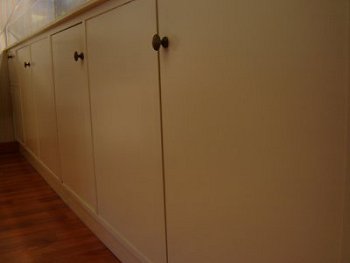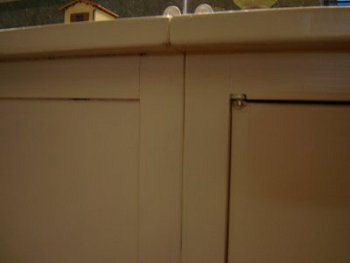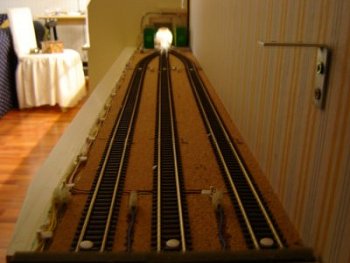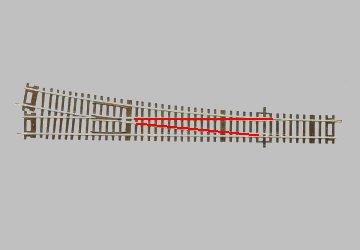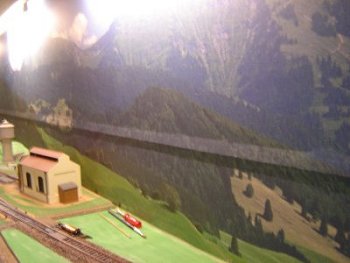
Mistake n° 1 – The upper part of the cabinet was made like a type of cigar box which has a hinge down the long side. This when closed maintains the vital 15cm of space on the inside meaning that the model can be hidden from view and hermetically sealed from the outside. Even if the photo exaggerates the effect (on purpose) the mistake occurred in the forgetting of the dimensions of the hinge (1.5mm.) and the successive application of the background over this hinge results in a “bubble” which is both un-natural and anti-aesthetic. It only needed me to glue a sheet of 1.5mm. wood to the surface before applying the background and there would have been no problem. The only comfort in all this is that when the top is closed, the two flaps of the background covering the hinge, fold in on themselves leaving no visible trace of the fold when it is re-opened.

